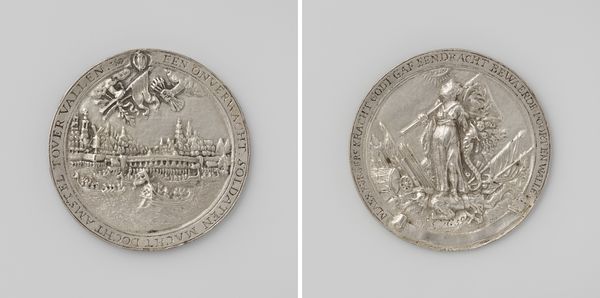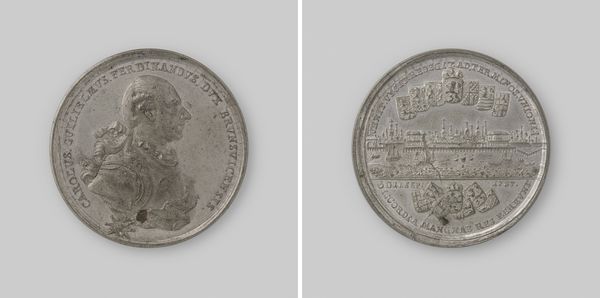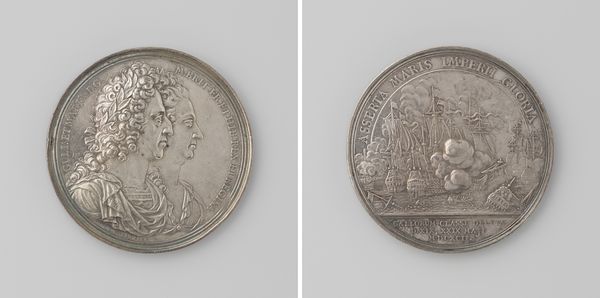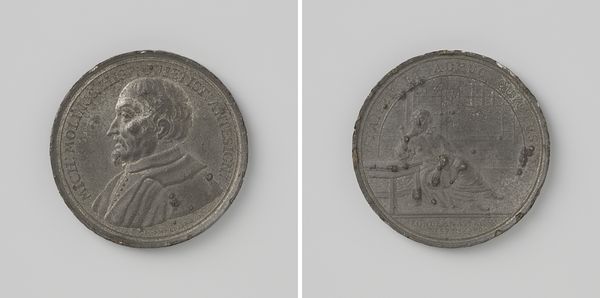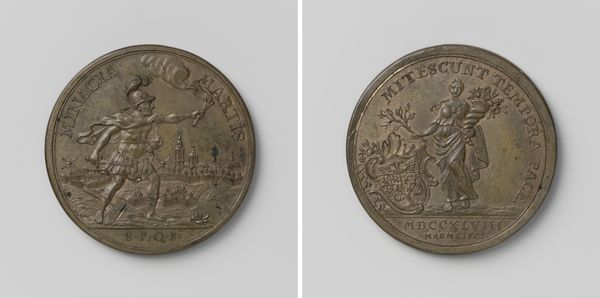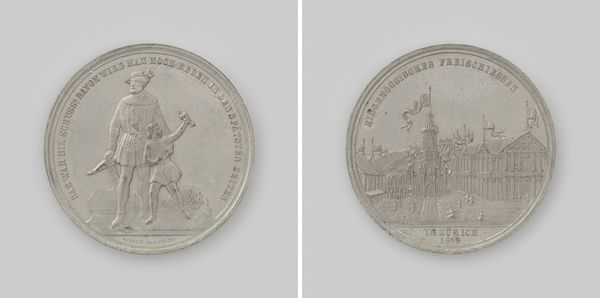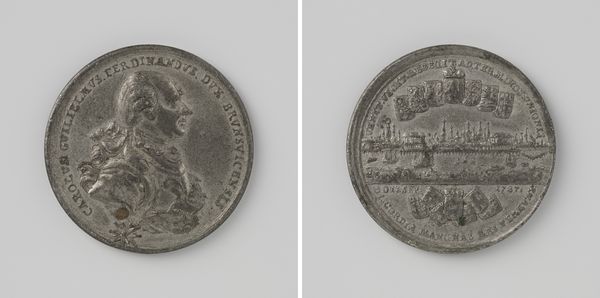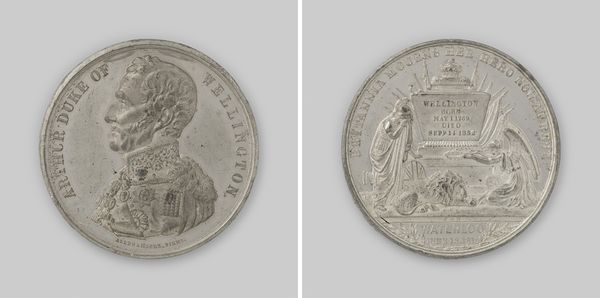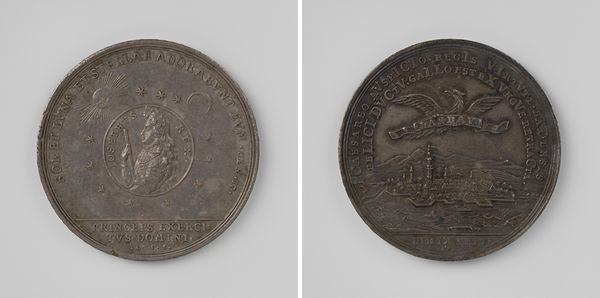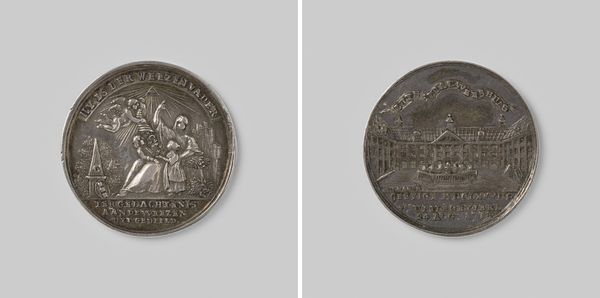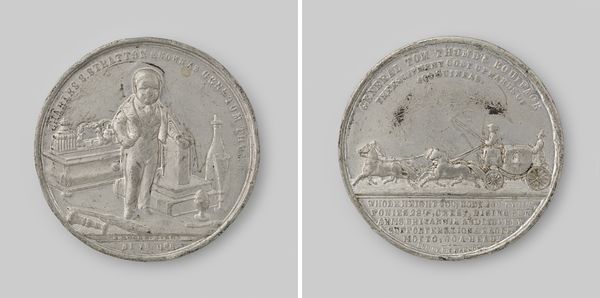
Capitulatie van Amsterdam, ter ere van Karel Willem Ferdinand, hertog van Brunswijk 1787
0:00
0:00
Dimensions: diameter 4.6 cm, weight 36.68 gr
Copyright: Rijks Museum: Open Domain
Curator: This is a medal titled "Capitulatie van Amsterdam, ter ere van Karel Willem Ferdinand, hertog van Brunswijk," created in 1787 by Johann Christian Reich. It appears to be made from bronze or a similar metal. Editor: My first thought is of its intricate detail. Even on a small scale, the relief is incredibly precise. The starkness of the metal gives it a serious, almost austere mood. Curator: Indeed. The medal commemorates the capitulation of Amsterdam to Charles William Ferdinand, Duke of Brunswick. Note how the composition divides the medal into two distinct sides. One bears the profile of the Duke, while the other depicts a scene of Amsterdam. Editor: If we delve into the context, what drove Reich to immortalize this specific event? What narrative was being crafted here? The inclusion of Amsterdam in the scene hints that it played an important role during the Dutch Patriot revolt. It is no accident this piece commemorates a Brunswick victory. Curator: Precisely. Let's consider the formal aspects. The use of profile portraiture harkens back to ancient Roman coinage, lending the Duke an air of imperial authority. The city view on the reverse, complete with meticulously rendered buildings, creates a sense of place and historical accuracy, framing Amsterdam's compliance in very specific visual language. Editor: But that language is complicated. While it appears to glorify Brunswick, the fact that Amsterdam is even included seems important for this commemorative artwork. We see the social function of the relief coming through. It communicates more than simple celebration; perhaps there are hints of negotiated power relations. Curator: And notice how the borders of the medal are inscribed with text. The lettering serves not only as identification, but as integral visual elements, framing the scenes they circumscribe. The material, too—likely bronze—imbues the object with a sense of permanence, as if attempting to solidify this historical moment in material form. Editor: I hadn't considered how the medal itself acts as a tiny stage for a moment in political theater. The artist manipulated these figures through careful consideration to affect history itself. Curator: In closing, Reich’s medal captures a pivotal moment. The detailed engraving invites careful analysis into how authority, victory, and place were presented for the audiences of its time. Editor: Reich invites us to see power made permanent through material. From political symbolism to the physical properties of bronze, there’s a striking relationship between this object and what it hoped to solidify for history.
Comments
No comments
Be the first to comment and join the conversation on the ultimate creative platform.
